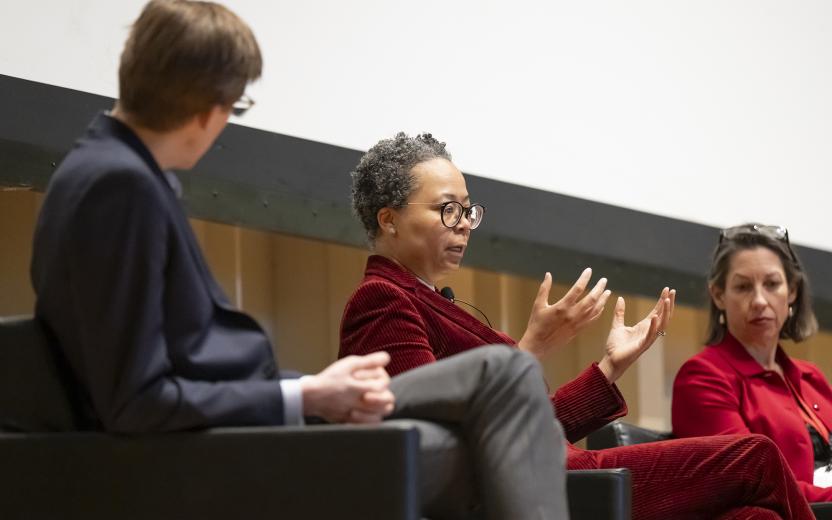More than 100 Cornell faculty and staff members, plus graduate and undergraduate students, put their heads together to explore methods and tools for collecting, protecting, sharing and understanding data at Cornell Day of Data , Oct. 15 in the ILR Conference Center, King-Shaw Hall.
“We had a broad swath of people – from human ecology to economics, from business to astronomy, from physics to the bioinformatics fields,” said Wendy Kozlowski, a data curation specialist at Cornell University Library and coordinator for Cornell’s Research Data Management Service Group (RDMSG), the two organizations hosting the event.
“I think that was a really good reminder to us that we aren’t working in isolation based on our discipline,” Kozlowski added.
David Mimno , associate professor of information science, delivered the keynote talk, “Data Science and Data Scholarship,” and shared advice and techniques culled from computational text analysis. Following the keynote was a panel discussion about data challenges and solutions, moderated by Nina Therkildsen, assistant professor of natural resources, and featuring Drew Margolin, assistant professor of communications; Katherine Muller, postdoctoral researcher in horticulture; and Kelsey Utne, a doctoral student in history.
Following a networking lunch with representatives from research-related campus organizations, concurrent workshops delved into topics that included mining Twitter data, research record keeping, “big data” computing, and sharing and safeguarding data.
Bryan West, a doctoral student studying social psychology, was among attendees who participated for the whole day and mingled with colleagues from different disciplines.
“I just met a couple of people who are in the neuroscience program here, and it was fun to talk to them a little bit about what they do and the kinds of analyses they run,” he said.
West said he appreciated hearing talks by scholars in other fields, like the humanities and bioinformatics, and discovering commonalities amid specializations.
“It was just interesting,” he said, “to see how everyone is using the same tools to do very different things.”
This story also appeared in the Cornell Chronicle.





